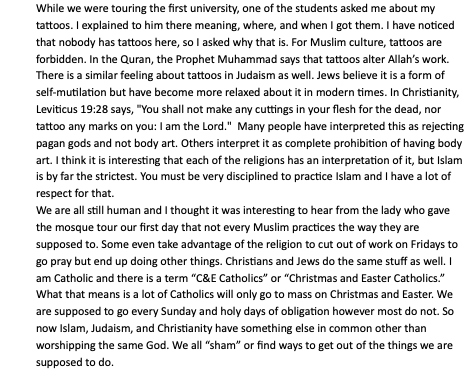Education in Morocco
Education in Morocco has become more accessible, but there is still room for improvement, particularly in rural areas. In Morocco, most young children around ages 6-15 are required to have an education that is free, however, many girls in rural areas do not attend, and many students do not stay enrolled past the secondary level (Melissa W., 2022). Something that stood out to me while traveling through some of the rural areas in Morocco, was that many young children were walking or riding bikes by themselves to get to and from school, which may make it challenging for them to stay motivated to go to school every day. Children whose head of the house has a higher educational background are 2.9 times more likely to attend school than those who have a father who does not (Rahhou, 2023). Despite these challenges, the quality of education for those attending school and seeking higher education has progressed. The literacy rate for adults in Morocco has increased to 74% since Morocco gained independence from France (Melissa W., 2022). After interacting with many of the ENA students, I learned that they were able to speak multiple languages, which were mostly Arabic, French, and English. I was impressed by their linguistic abilities and I think it was great that because of this, we were all able to easily communicate with one another. They also informed me that their college enrollment was free and only had to pay for books and other school supplies, but had scholarship opportunities. Overall, accessibility and quality of education have improved a lot in Morocco and there are many efforts to continue to do so.
Melissa W. (2022, December 10). The education system in Morocco. Senior Class Graduation Products.
Jihane Rahhou - Morocco World News. (2023, January 9). Social disparities deepen education inequality in Morocco.


Hi Taylor,
ReplyDeleteI was also impressed by the ENA students' multilingual skills and the fact that they have free tuition. Their ability to speak Arabic, French, and English is impressive and enhances communication. The free tuition, along with scholarship opportunities, makes higher education more accessible and reduces financial barriers.